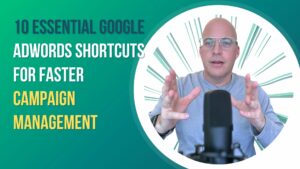A digital content strategy provides a roadmap for creating, optimizing, and distributing content that aligns with your brand’s objectives and resonates with your target audience. It ensures that your website’s assets are utilized effectively to attract and engage users, drive traffic, and, ultimately, achieve your business goals. A solid digital content strategy enables you to establish your brand’s online presence, build credibility and authority within your industry, and differentiate yourself from competitors.
Your website assets include articles, blog posts, videos, images, and more. By understanding and maximizing these assets, you can create a robust digital content strategy that captivates your audience and achieves your business goals.
Assessing Your Website Assets
Assessing your website assets involves conducting a content inventory and analyzing the audience. A content inventory allows you to identify and evaluate the existing content on your website, determining its quality and relevance. Conducting a content inventory entails identifying all published content.
Performing an audience analysis helps you understand your target audience better. Define their demographics and gather insights into their needs, pain points, and content preferences. By conducting a thorough content inventory and audience analysis, you can bridge content gaps, enhance the quality of your website assets, and align your content strategy with the preferences and needs of your target audience.

Setting Goals and Objectives
Setting goals and objectives is essential for an effective digital content strategy. It involves defining and aligning overall business goals with them while establishing measurable objectives for your website assets. Defining business goals provides a broader context for your strategy, whether it’s increasing revenue, expanding market reach, or strengthening brand awareness. Aligning website goals with these objectives ensures that your website supports and contributes to achieving your business goals.
Measurable objectives allow you to track progress and make data-driven decisions. By setting clear goals and objectives, you provide direction and focus to your strategy, ensuring that your website assets are aligned with your broader business goals and enabling you to track progress and make necessary adjustments. Regular evaluation and refinement of objectives are key to staying responsive to market dynamics and continuously improving your business outcomes.
Content Planning and Creation
In content planning and creation, it is essential to conduct content mapping to identify gaps in your existing content and determine the content types and formats. Keyword research plays a role in optimizing your content for search engines and attracting organic traffic. Incorporating relevant keywords naturally into your content planning enhances search engine optimization.
The content creation process involves developing a content creation schedule or editorial calendar to ensure a consistent publishing cadence, assigning responsibilities to content creators, and maintaining brand consistency throughout the content creation process. Consistency in brand voice, tone, and guidelines helps establish a strong brand identity and builds trust with your audience.
Optimization and Organization
Optimizing and organizing your website content is important for maximizing visibility, enhancing user experience, and improving SEO. On-page optimization techniques such as optimizing page titles, meta descriptions, and URLs, incorporating relevant keywords naturally, and using headers and subheadings improve search engine rankings and user engagement.
Content organization through straightforward navigation, logical menus, categories, tags, and internal linking enhances the user experience, facilitates content discovery, and boosts SEO efforts. Optimize your website content for maximum impact, ensuring it is easily discoverable, user-friendly, and effectively aligned with your digital content strategy.

Promotion and Distribution
Promoting and distributing your website content effectively is needed to reach a wider audience and drive engagement. Social media integration enables you to leverage the power of social platforms by sharing your content on relevant platforms, tailoring it to user preferences, and utilizing engaging visuals, captions, and hashtags. Engaging with your audience through comments and discussions fosters a sense of community and strengthens brand presence. Email marketing allows you to nurture relationships and drive traffic by building an email list, offering valuable incentives, and sending targeted emails with personalized and relevant content.
Collaboration and partnerships expand your reach through guest blogging, content exchanges, and cross-promotion with complementary websites or influencers. These strategies maximize your content’s exposure, enhance credibility, and introduce your website to new audiences.
Analyzing and Refining
Analyzing and refining your digital content strategy is essential for continuous improvement and maximizing its effectiveness. Furthermore, this involves tracking website analytics to understand user behavior and identify successful content and areas for improvement. Moreover, you can gain valuable insights into how users interact with your content by monitoring website traffic, engagement, and conversions. Analyzing successful content helps you understand the factors contributing to its performance. Moreover, addressing pain points, improving the user experience, and ensuring your content resonates with your audience is best. Furthermore, this data-driven approach allows you to continuously refine and optimize your digital content strategy for better results.
Maintenance and Updates
Regular maintenance and updates are vital for keeping your website optimized, functional, and relevant. This involves two key aspects: regular content updates and website performance optimization. Moreover, regularly updating your content ensures that it remains fresh, accurate, and engaging for your audience. Furthermore, fixing outdated information and broken links is crucial to enhance user experience and maintain SEO.
It optimizes your website’s performance by monitoring its speed and making necessary improvements. Moreover, it ensures a seamless user experience, reduces bounce rates, and improves search engine rankings. Overall, consistent maintenance and updates are essential to maintain a high-performing, user-friendly website that delivers value to your audience.
Successful Digital Content Strategy
A successful digital content strategy requires ongoing evaluation and adaptation. The digital landscape constantly evolves, and consumer preferences and behaviors change. Furthermore, regularly review your strategy, assess its effectiveness, and adjust to stay relevant and achieve optimal results.
You can make the most of your website’s assets and drive business growth in the digital realm. Finally, continuously evaluate and refine your strategy to stay ahead of the competition and deliver valuable and engaging content.








